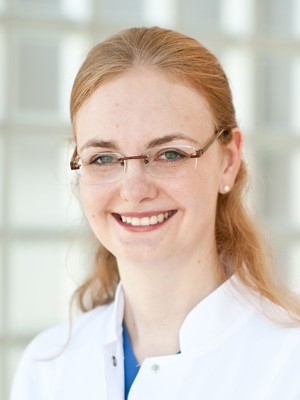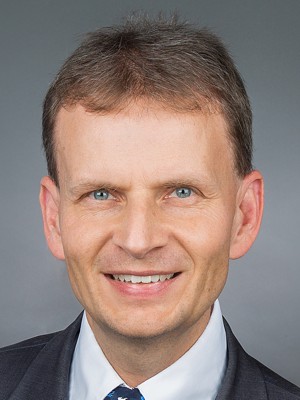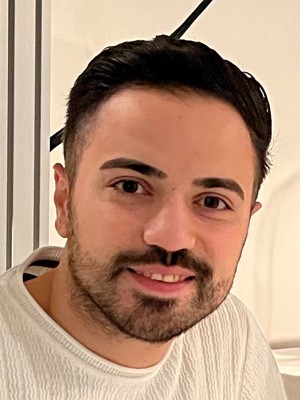Project T1 - Transfer Project - Individualized Deep Brain Stimulation

Deep brain stimulation (DBS) is a clinically effective treatment for movement disorders, including Parkinson’s disease and essential tremor. The number of patients treated with DBS is rapidly increasing (> 150,000 worldwide). The knowledge of the precise position of the implanted electrode in the brain in combination with the adjustable stimulation parameters and the resulting stimulation area in the human brain are essential for the best treatment of DBS patients. The aim of this project is to detect the position of the DBS electrode in patients and additionally to determine its rotation based on the orientation marker on the electrode. This will allow for calculating the stimulated area in the brain. The magnetoelectric (ME) sensors being developed within the framework of the collaborative research center (CRC) 1261 will be used for this purpose. The position of the electrode as well as the orientation of the rotation (which is surgically uncontrollable) can be detected with this tool, thereby avoiding radiation for the patients currently exposed to MRI or CT (position) or fluoroscopy (orientation). Research in the first funding period had laid the foundations for this.
In the first work package, the (newly and continuously) developed CRC sensors will be evaluated on the basis of important characteristics of such sensors for this application. The selected sensors will then be used to perform magnetic field measurements for reconstruction of the DBS electrode that has been successfully developed for a simplified phantom in the first funding period under B5. This needs to be extended to the individual brain imaging (CT/MRI) of patients with implanted electrodes in the second work package of this project. The detection of the directional electrode orientation in the phantom will be an additional part of this work package. The electrophysiological localization and orientation results will then be integrated into the individual neuroimaging data (preoperative MRI and postoperative CT/MRI) in the third work package. The localization of the electrode in the brain can be performed with several software programs, e.g. by using the open-source toolbox Lead-DBS that is developed in a DFG-Emmy-Noether group (Dr. Andreas Horn, Charité Berlin) for research purposes. In the next step, also in work package two, the stimulated electrical field with respect to the anatomical structures in the brain will be calculated for the individual stimulation parameters and implemented in such a system.
We plan to develop a software package that can be wrapped into image-based software to display the magnetically measured and reconstructed electrical fields within the individual MRI of the patient. Comparing this in silico imaging with the best point for stimulation for specific symptoms will be a helpful tool for better programming of the DBS devices of such patients. We established a cooperation with the company Boston Scientific (producer of DBS equipment and surgical planning and programming software), which had shown interest and is ready to contribute further to this transfer project. The collaboration will ensure in this transfer project that the medical and industrial requirements are considered and that the evaluation will be performed with state-of-the-art stimulators and industrial routines. The main motivation of the company is the possibility to measure the position and rotation of the segmented electrode non-radiatively. The close collaboration will serve to design a system for the calculation of the tissue activated by deep brain stimulation and to test its accuracy in various clinical studies where the side effects and effects can be clinically measured to validate this model.
Involved Researchers
| Person | Role | |
|---|---|---|
 |
Prof. Dr. Günther Deuschl Neurology University Hospital Schleswig-Holstein |
Project lead |
 |
Prof. Dr. Ann-Kristin Hellmers Center for Neurosurgery University Hospital Schleswig-Holstein |
Project lead |
 |
Prof. Dr. Michael Höft Electrical Engineering Microwave Engineering |
Project lead |
 |
M.Sc. Mevlüt Yalaz Electrical Engineering Microwave Engineering |
Doctoral researcher |
Role within the Collaborative Research Centre
Collaborations are planned with the following projects:
| Collaborations | |
|---|---|
| A7 (Electrically Modulated Magnetoelectric Sensors) | Application of electrically modulated resonant ME cantilever for DBS measurements. |
| A8 (Modelling of Magnetoelectric Sensors) | Modelling of sensor array distribution, improvement of localization accuracy. |
| A9 (Surface Acoustic Wave Magnetic Field Sensors) | Application of SAW magnetic field sensors for DBS measurements. |
| B1, B2 | Research of the ME and SAW sensor systems and arrays, sensor localization (B2). |
| B9 (Magnetoelectric Sensors for Movement Detection and Analysis) | Recruitment of Parkinsonian patients jointly and evaluation of at least two patients together. |
| B10 (Magnetoelectric Sensor Systems for Cardiologic Applications) | The common use of all study participant management and data acquisition procedures. |
| Z1 (MEMS Magnetoelectric Sensor Fabrication) | ME sensors for sensor systems and arrays. |
| Z2 (Magnetoelectric Sensor Characterization) | Support provided for Biomagnetic measurements: Construction of ME sensor systems and arrays, performing measurements with head scanner within the magnetically shielded chamber, improvement of the phantom head. |
| Boston Scientific | This funding period of the CRC will be continuously supported by the company Boston Scientific, which is interested in these research topics. |
Project-related Publications
|
|
|
|
|
|
|
|
|
|
|
|
|
|
|
|




